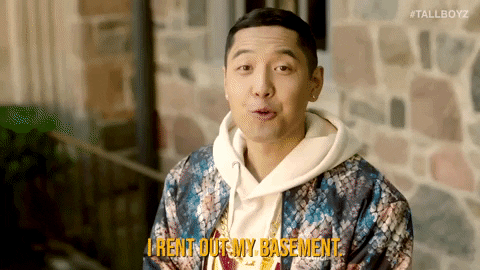Real estate investing is easier than you think. You can invest in real estate without buying a house, for less than the cost of a lunch date.



Real estate investing is easier than you think. You can invest in real estate without buying a house, for less than the cost of a lunch date.

Many have dreamed of having King Charles-like real estate holdings … though most of us would be thrilled just to own a home in this market. While homeownership may be impractical or inadvisable for most young people, investing in real estate certainly isn’t. As you will see, there are many ways to invest in real estate without buying a house.
Even if you have the means to buy a home, consider other real estate investing options first. Especially if you’re young. Home ownership has the hallmarks of a dangerous investment—it’s undiversified, illiquid, and leveraged.
It’s undiversified, as most homeowners can’t afford to buy, say, 10 homes across the country. They just have one house in one market. It’s illiquid because you can’t sell it quickly at fair market value like you usually can with a stock. Nor can you sell just part of your house.
And, to top it off, it’s leveraged: Usually people finance their home purchase with debt, i.e., a mortgage. Debt amplifies gains—and losses. Many people learned that the hard way in 2008, and I suspect many more will in the coming decade.
Most people wouldn’t dream of putting the vast majority of their life’s savings in a private investment in a single company’s stock, one they couldn’t easily sell at a knowable price, and then finance that purchase with debt. Yet that’s basically what they do when they put the bulk of their life’s savings in a home.
Nor is investing in a home inherently less risky than the stock market. Nobel laureate Dr. Robert Shiller discovered there were times in the 1990s when homes were worth less, in inflation adjusted terms, than 100 years earlier. And that’s not including property taxes or maintenance costs. Furthermore, home prices fell precipitously in inflation-adjusted terms from 1900 to 1940. The alleged giant returns that come from homeownership are predominantly from juicing the returns—and thus the risk—with debt and getting lucky.
This doesn’t mean nobody should buy a home. It’s just that it’s best thought of as a way to save on rent rather than as a wealth building investment. And your buy-or-not decision should heavily weigh that.
But for most of us, there are ways to invest in real estate that are easier, safer, require far less money, and are more likely to have a long-term return.
The simplest way to invest in real estate without buying a house is to buy stock, i.e., ownership in a landlord. Which is what you’re doing when you buy a share of a Real Estate Investment Trust (REIT).
Want to own single-family homes? You can buy a share of Invitation Homes (NYSE: INVT) for about $35. Want to own shopping centers? You can buy a share of Simon Property Group (NYSE: SPG) for about $100. Want to own high quality New York City office space? You can buy a share of Vornado (NYSE: VNO) for about $25. Want to be like Bill Gates and buy farmland? You can buy a share of Gladstone Farms (NYSE: LAND) for about $20.
Or even better, just buy an ETF that holds a diversified basket of REITS and be done with it. A REIT ETF is a way to invest in a real estate mutual fund. An example is Vanguard’s Real Estate ETF (NYSE: VNQ), which holds 167 major U.S. landlords for about $90 a share.
With REITS, the world is your oyster. And I do mean the world. You can buy a global real estate ETF, like iShares Global REIT ETF (NYSE: REET) for about $25 a share and own a piece of the entire world’s real estate market. It’s a great way to diversify your portfolio.
REITS also pay you distributions and usually pay quarterly. For example, iShares’ REET yielded 3.2% over the past year. However, distributions are usually taxed as ordinary income and not as qualified dividends because REITs aren’t subject to corporate income tax if they meet certain requirements. Being taxed as ordinary income is not that big a deal for young people but one way to get around it is to buy REITs as part of your 401k or IRA—yes, they can hold them.

Another way to invest in real estate without buying a house is to sublet the apartment you already have, if your lease allows it, and become a quasi-landlord yourself. This is particularly apt during the holidays when you may fly across the country to see loved ones. Odds are someone else is doing the same and could stay at your place if you leased it out via Airbnb. You could even use the proceeds to invest for a down payment on a house if you still want one. Or use it to fund a long jungle safari … where you Airbnb your place to help pay for the safari.
This requires more time and hands-on involvement than buying a REIT ETF. But the return on investment is likely to be greater. There are instances, however, where your time might be more valuable to you than the extra money. Like if you could earn more by using that time to productively focus on your “real” job.
Before anyone could buy your dream house, somebody had to build it. So another way to invest in real estate without owning a house is to invest in home construction. You can easily do that by purchasing stock in a home builder. One such example is luxury home builder Toll Brothers (NYSE: TOL), who may have built your friend’s wicked mansion.
Or, and you probably saw this coming, you could buy an ETF that owns stock in many homebuilders. One such example is SPDR S&P Homebuilders ETF (NYSE: XHB). You could even invest in both commercial and residential real estate, simultaneously, by buying Invesco’s Dynamic Building and Construction ETF (NYSE: PKB).
You may ask: Which is better, investing in REITs or in construction? The answer is construction is higher risk and higher reward and is much more economically sensitive. In that way, it more closely resembles the underlying stock market, so for diversification, I’d give REITs the nod. REITs should also give greater return in cash flow from distributions, whereas construction stocks get most of their return from the stock going up. The fancy term for this is capital appreciation.
As we’ve seen, $25 can buy a share of the whole world’s real estate market. That’s cheap enough for anyone seeking portfolio diversification. And no mortgage to boot.